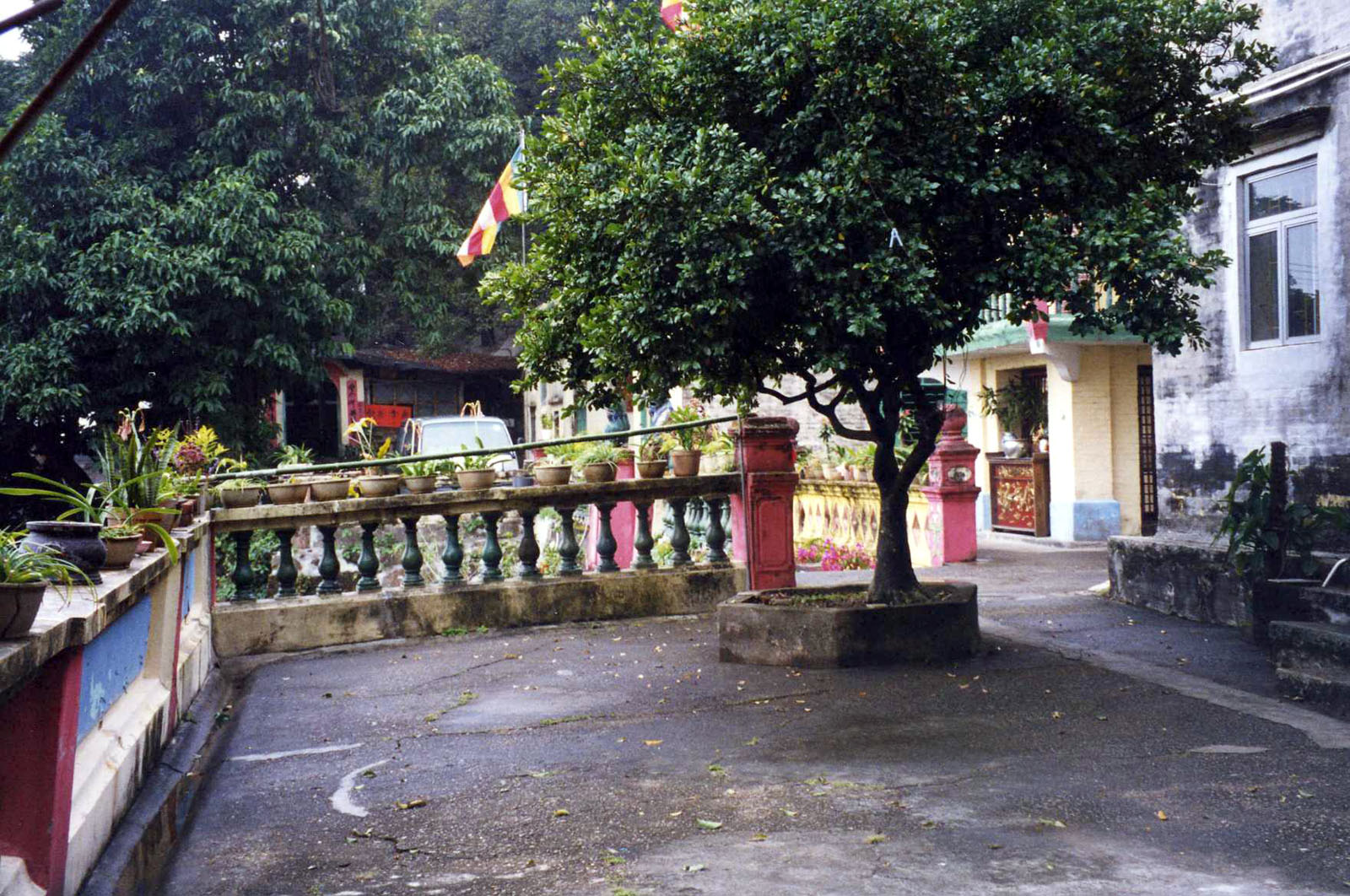Tsing Shan Monastery
Tsing Shan Monastery is said to be first established by a legendary monk called Pei Du or Cup Ferry who escaped from Chinese Mainland to Castle Peak some 1,500 years ago. It is built on the slopes more than 500 ft up Castle Peak, overlooking Tuen Mun Town. The monastery has been rebuilt many times. In 1821, it was taken over by Taoists and added new buildings and decorated with their emblems. In 1921, buddhists recovered the monastery again and rebuilt it more or less as it stands today. The archway leads to the shrine for the Temple Guardian. On the right is a Taoist temple called Ching Wan Kwun, built in 1843. It is the altar for Guanyin Bodhisattva. This is evident of the usual religious tolerance in Chinese society. Another example is the main temple, which is the Great Buddha's Hall. The main altar enshrines 3 statues of Buddha namely Sakyamuni, Amitabha and Healing Buddha. These wooden statues covered with gold are more than one hundred years old. But the apex of its roof is decorated with the typically Taoist dragons and carp on either side of the dragon pearl. On the left is a staircase leading to a platform where a small white pagoda in Tibetan style stands. Symbols of Tibetan Buddhism in bright colours are painted. Colourful pennants are hung. Behind the main temple is a small trail leading to a grotto where the fossil of a vertebrae is preserved in a cage. The popular belief is that it is the bone of a dragon. A few steps beyond is an archway leading to the grotto believed to be where Pei Du meditated. Inside it is the statue of Pei Du and a stone inscription which reads 'High Mountain, First in Merit'. This one is the replica of the original one, which is said to be inscribed by a Tang scholar. The garden in front of it is the altar for a 4-faced Buddha from Thailand. Further in are some red brick structures which are dilapidated and overgrown with weeds. The shady and neglected environment looks like a hideout more than anything. There is also a shed which serves as canteen of vegetarian dishes. This monastery is quite unusual in that its location is very isolated and lonesome. Surrounded by trees and high up in the hill, it is less visited than other Buddhist monasteries. The vastness and the quietude of the complex are ideal for creating the mood of desolation.
Call before applying in writing with information on the location, date, time and description of the scenes.
Processing time : 1 month.
No charge but donation accepted.
- Filming can take place every day except when Buddhist ceremonies take place.
- Filming content must not violate the tenets and doctrines of Confucianism, Buddhism and Taoism.
Compliments to the government and public bodies that have agreed to consider applications to hire premises or facilities under their management for location filming.







